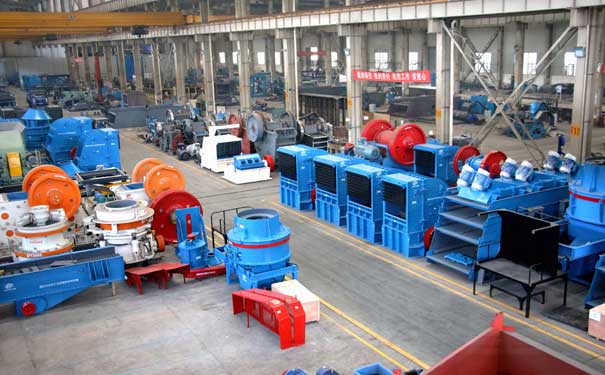(Construction Waste) The most common used screening equipment in the solid waste processing
The most common used screening equipment in the solid waste processing has three types: stationary screen, vibrating screen and drum screen.
(1) Stationary Screen
The screen surface consists of many parallel arrangements of bars and can be installed horizontally or tilted. The characterized with simple structure, no consumed power, low cost and convenient maintenance, so which is widely used in solid waste separation. The stationary screen also can be divided into grating screen and grizzly screen. The grating screen should be installed generally before the primary crusher to ensure that the material grain size is appropriate. The grizzly screen is suitable for coarse waste that particle size of screening greater than 50 mm, commonly used before coarse and medium crushing, the inclination angle should be greater than the waste friction angle of screen surface when installation, generally 30-35 degrees, to ensure the material falling along with the screen surface. The mesh size of grizzly screen is 1.1 -1.2 times of particle size of undersize material, the grizzly width should be greater than 2.5 times that of the largest size in the solid waste.
(2) Vibrating Screen
The vibrating screen is one of widely used equipment in many industries. The characteristic is that vibration direction perpendicular to or approximately perpendicular to the screen surface, the vibration frequency of 600—3600 r/min, and the amplitude of 0.5-1.5 mm. Material segregated on the screen surface, the particles of large density and small grain leather through into the particles paces between small density and large size, entering into the lower layer and reach to surface. The appropriate angle of the vibrating screen is commonly 80 — 40 degrees. Due to the strong vibration of screen surface to eliminate the mesh blocked, which is advantageous to screening of the wet materials, so the vibrating screen can be used for the coarse, medium and fine screening of construction waste. The vibrating screen has two main types: resonance screen and inertia vibrating screen.
A Resonance screen
Its structure and working principle as shown in figure 1.Screen box, spring, and the body of a elastic system, under resonance screen has the advantages of large capacity, high screening efficiency, less power consumption and compact structure, is a kind of promising sieve, but at the same time, it has complex manufacturing process. The body weight, such as rubber spring aging faults.
B Inertia vibrating screen
Its structure and working principle as shown in figure 2.It is through by the unbalanced centrifugal inertia force produced by the rotation of the body drives the screen box produce vibration and screening of the material.Inertia vibrating screen is suitable for the particle size of 0.1 a 15 mm of fine grained waste screening, can also be used in damp and brittle waste screening.
(3) Drum screen
It is a slowly rotating (average speed control in 10-15 r/min) of cylindrical sieve surface, the axis of cylindrical screen Angle generally installed at 3 a 5 degrees.Shock sieve plate is the most commonly used screen surface, also can be a variety of materials woven mesh, screen mesh enclosures screen surface shall not apply to the screening line material.Screen, the material is a little higher end into, immediately following the drum roiling inside screen, fine particles eventually wear through sieve sieve pores.Drum screen Angle determines the material the axial speed, and perpendicular to the Jane uranium materials behavior is decided by the speed.There are three kinds of material movement in a sieve.
a. setting state b. fan status c. centrifugal state.

